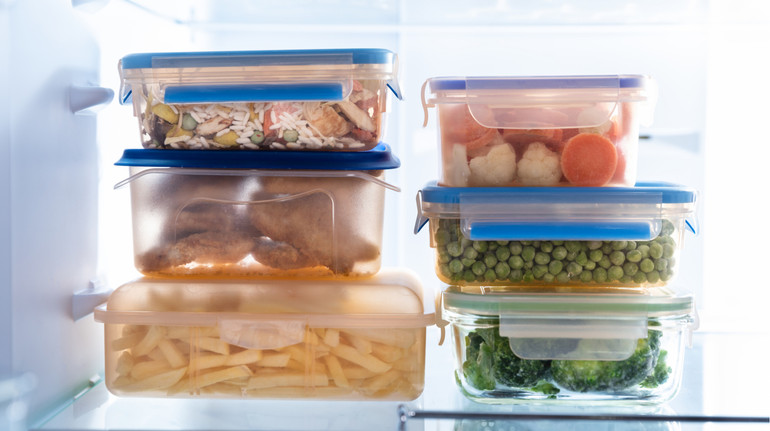Is it possible to heat food in plastic containers in a microwave

Researchers advise to replace plastic with glass or ceramic dishes
PantherMediaseller/Depositphotos
In May, the United States filed a collective lawsuit against Ziploc, which produces plastic bags and containers.
The company is accused of the fact that the instructions for its products do not say that during heating and freezing of plastic containers, microplastic is released.
Although the company’s representatives call this lawsuit « unfounded », there are some warnings about the use of plastic containers in the kitchen.
Scientists have told more about it to the publication Health.
What is a microp plastic and is it dangerous?
Microp plastics is called very small particles of plastic (less than 5 millimeters).
It enters the human body through food, water and air. There he gradually accumulates.
For example, recently microplastic They first discovered in the ovarian follicular fluid as well as in placenta.
Scientists study how it affects human health. But judging by those data that are now available, the conclusions are disappointing.
”In all the studies we found harm from microplasty« , – said the senior scientist from the National Council for the Protection of Natural Resources Katie Pelch.
Currently, science believes that the microproplastic is likely to harm the reproductive, digestive and respiratory systems, and may also be associated with colon and lung cancer.
Does heating or freezing of food in plastic really increase the level of microplasty in it?
A short answer is yes. IN study In 2023 it is said that polypropylene containers (the type of plastic, which is often used for packaging products) when heated in the microwave for only three minutes, allocate millions of micplasty particles in food.
If you store a plastic container at room temperature – it also leads to the release of micropplastic – however, in less.
The freezing of products in plastic has a similar effect, explains Dr. Carmen Marsit from Rallins’ Public Health School at Emory University.
”The freezing process can make plastic more brittle so more micplasty particles can get into food« , – she said.
Are there any other risks associated with plastic heating?
Many chemicals used in plastic production are considered harmful to human health. It is about chemicals such as PFAS, Phthalate and BPA.
In particular, PFAS is associated with the risk of cancer, weakening of immunity, disorders of reproductive function and developmental delays in children.
When plastic utensils are heated in the microwave, it helps to ensure that these chemicals are « washed out » from plastic to food, Carmen Marsitis explains. This can be seen even with the naked eye.
”If after the microwave you notice that the container became softer – it is a sign that chemicals from plastic got into your food« , – the researcher said.
According to her, the amount of harmful substances depends on the type of plastic. But in general, it is better to avoid heating any plastic, even if it is a « suitable for microwave ». Although such containers really should not melt, it does not mean that they are safe.
Is it necessary to completely give up plastic in the kitchen?
It is hardly possible to avoid plastic. But, as Katie Pelch notes, in the kitchen it is always worth looking for an alternative.
First of all, it advises to use plastic utensils for heating or freezing products. In particular, glass and ceramic utensils are usually suitable for microwave and freezer (although the marking should be checked before).
Stainless steel is mostly suitable for freezing.
In addition, the pelch advises to gradually replace other plastic items in the kitchen, such as cutting or blade boards. It should also be remembered that non -stick utensils are usually covered with PFAS chemicals that can be exfoliated over time.
In a world where most products are packed in one or another type of plastic, it is difficult to avoid it completely. But at home it is necessary to at least minimize the contact of food with plastic, summarizes the scientist.
We will remind, we used to toldthat bottled water can contain a large amount of nanoplasty, which is able to penetrate into the cells of the body.






:format(webp)/s3/static.nrc.nl/wp-content/uploads/2025/05/21143121/web-2105BUI_bos_brazil3.jpg)
